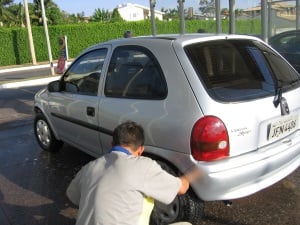How to Make your Car Smart
Lots of people we know now own these new devices called Fitbits – little wearable computers that track how much activity they do, how they sleep,...

Most drivers can tell you how much they paid for their car or truck when they bought it. But how many can accurately divulge how much that car is actually costing them to drive on a yearly basis? It's probably more than you think.
 Not least among all the useful stuff that AAA does is its annual Cost of Ownership Report. And the 2013 report was pretty enlightening when it comes to how much cost of vehicle ownership actually is.
Not least among all the useful stuff that AAA does is its annual Cost of Ownership Report. And the 2013 report was pretty enlightening when it comes to how much cost of vehicle ownership actually is.
To come up with its figures, AAA took the price of buying a new car model, and then driving it for five years. Main elements that went into the cost calculations were gas, maintenance, tires, depreciation, insurance, registration and auto finance charges.
If you drive 15,000 miles a year and you own a typical mid-size sedan like a Camry, you're looking at about $9,000 a year. You would think that driving an SUV would cost even more than that, and you'd be right - AAA calculates their cost at over $11,000 a year.
Size of vehicle choice directly relates to one of AAA's pieces of advice for the sticker-shocked consumer who asks how they can reduce these costs - consider buying a "size down" in what you think you need. Buying a large car instead of an SUV (going a size down) or a mid-size instead of a full-size can save you $2,000 a year if you drive an average yearly distance. Two thousand bucks may not seem like a huge amount, but if you were to make that as an extra payment on, say, your mortgage, that $2,000 would actually turn into $40,000 in savings over the life of the note. That ain't too shabby.
AAA also gives out some advice which some folks won't like - don't buy a new car. New cars lose 20% of their value just in the first year. On the flip side, that means if you buy a newer used car that's only a year or two old, you'll play 20 or 30 or 40% less and still come away with a quality car in excellent condition that will last you for a long time.
How do you know what your car really needs done, as opposed to what the shadetree mechanic down the street says? Consult the owner's manual. Today's car are really reliable and don't need a lot of maintenance, at least not in the first 100,000 miles. The owner's manual gives a list of what needs to be done; check it out and then call your mechanic to get an idea of how much the upcoming costs are going to be. That always has to be factored into your budget.
Since you're going to have to get insurance whether you like it or not, you should factor cost of insurance into your buying decision. Despite what you may think, smaller cars aren't always cheaper to insure than big ones. Some of it has to do with the notion that bigger, expensive cars are less likely to be in an accident because the people buying those expensive car are more careful with them. So whether or not you actually fit into that group, you can still reap the benefit of other people's carefulness.
Photo Credit / Creative Commons / No Changes Made

Lots of people we know now own these new devices called Fitbits – little wearable computers that track how much activity they do, how they sleep,...

We’ve missed doing a blog for National Car Month the past couple of years, so here it is! National Car Month is the brainchild of the Car Care...

A follow-up to our previous blog entry on things to look for when shopping for a used car. Buying a used car is always a better financial decision...